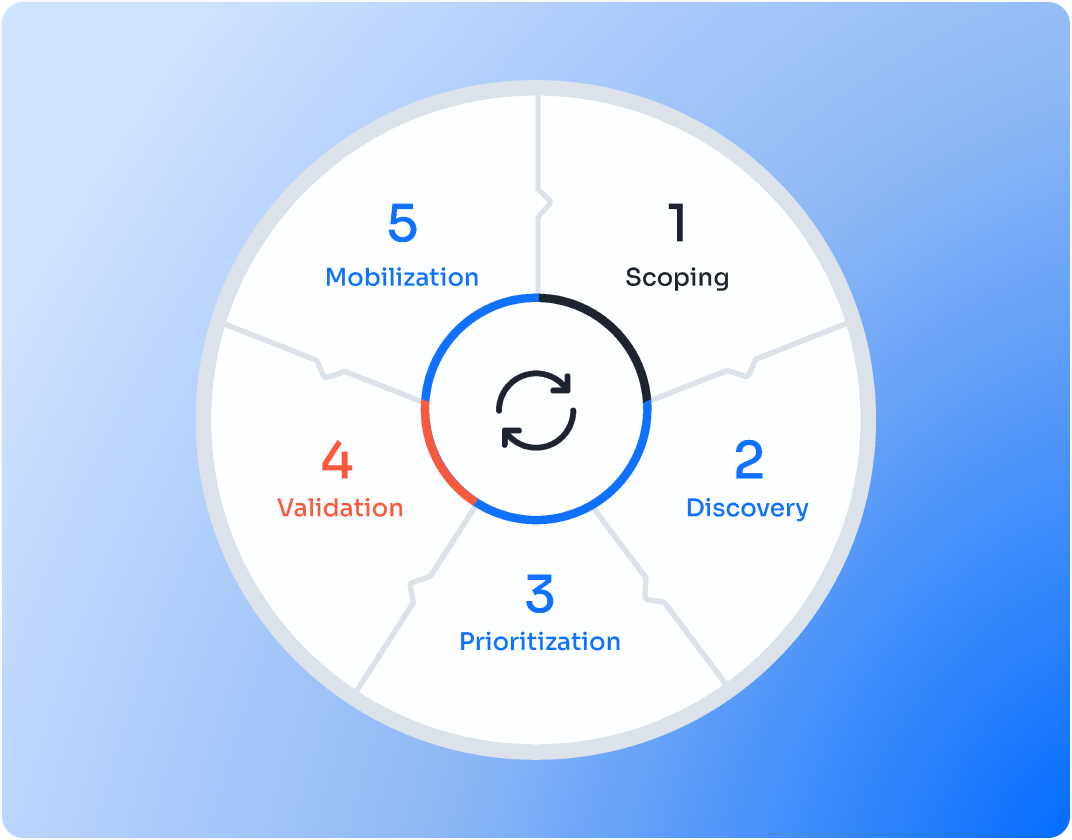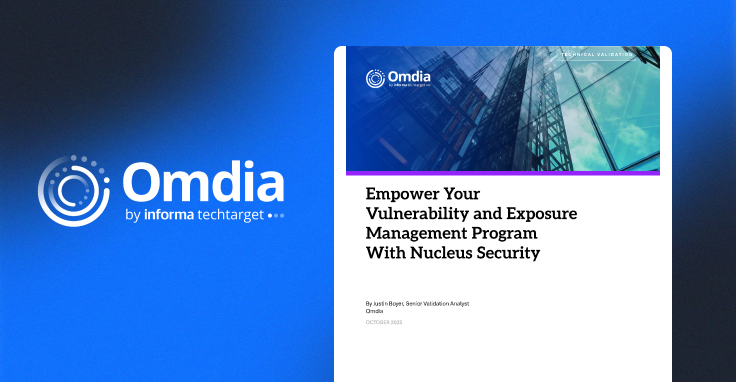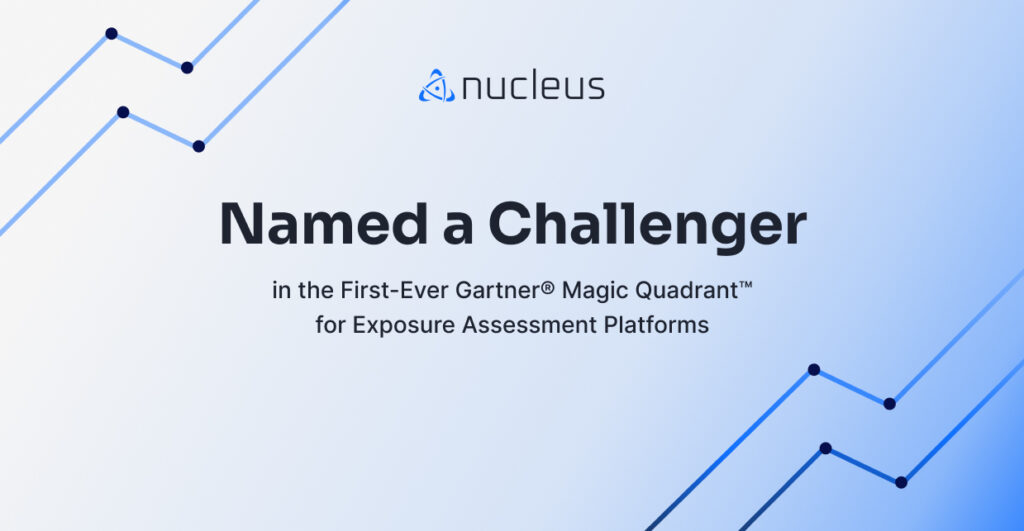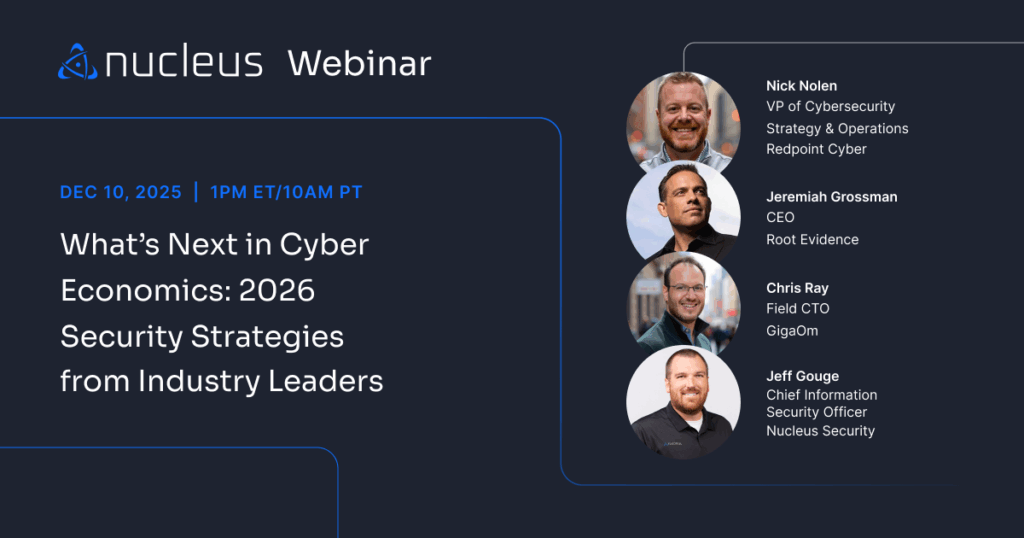Why Vulnerability Scan Results Don’t Reflect Real Risk
Most security teams are drowning in scan data and still miss what matters. That’s because vulnerabilities aren’t the entire problem. Exposure is. And unless you understand your real attack surface, you’re playing defense in the dark.
Exposure management shifts the focus from chasing CVEs to managing what actually increases the likelihood of compromise. Simply uncovering more vulnerabilities hasn’t improved outcomes. Context, validation, and actionability are now non-negotiable factors for any organization to consider.
71% of organizations say that reducing risk and exposure has become more difficult over the past two years.
~The Evolution of Risk Reduction, 2025 Enterprise Strategy Group Study
Exposure Management Isn’t What You Think It Is
Exposure management is a structured approach to identifying, contextualizing, validating, and reducing all forms of security exposures across an organization’s digital footprint.
Where traditional vulnerability management stops at discovery, exposure management focuses on relevance and risk. It considers the environment in which these exposures exist and whether they are likely to be exploited.
Traditional Vulnerabilities
These are the known, patchable weaknesses like CVEs that scanners detect. But by themselves, they don’t tell you what’s actually risky or exploitable in your environment.
Configuration and Control Gaps
Misconfigurations, policy violations, and missing controls often go undetected—but they’re a leading cause of real-world breaches. These exposures can’t be patched, only mitigated.
Shadow IT and Unknown Assets
Leaked credentials, untracked cloud instances, and internet-exposed systems create blind spots. If they’re not in your inventory, they’re not in your defenses either.
Look Beyond Vulnerabilities to See the Full Risk Picture
Unlike traditional models that emphasize severity scores like CVSS, exposure management brings together risk-based prioritization, attack path analysis, and broad visibility across digital infrastructure. It evaluates the exploitability of each issue and maps it to real business impact. That means understanding how exposed a system is, how reachable it is from the internet, and whether it sits on a critical pathway within your operations. An exposure that could be exploited to access sensitive data or disrupt a business-critical function deserves faster action than one buried behind layers of compensating controls.
The CTEM Framework: A Practical Exposure Management Approach
To make exposure management operational and repeatable, many organizations adopt the Continuous Threat Exposure Management (CTEM) framework. It consists of five interrelated stages that structure how teams define and address their security exposures.

Step 1: Define Your Exposure Management Scope
Exposure management begins by focusing attention on where it matters most. Instead of trying to address every issue everywhere, organizations scope their assessments to high-value or high-risk segments. Common starting points include customer-facing applications, systems tied to compliance frameworks like PCI or FedRAMP, and business units that frequently interface with external environments. By starting small and targeted teams can deliver measurable outcomes quickly and expand from there.
Step 2: Asset Discovery and Inventory Normalization
You can’t secure what you can’t identify. Discovery in exposure management is about building a coherent, deduplicated inventory of assets across cloud, on-prem, and hybrid environments. Exposure assessment platforms integrate with vulnerability scanners, cloud security tools, endpoint agents, and asset inventories to produce this unified view. One healthcare customer using Nucleus was able to reduce duplicated asset records by more than 60%, significantly improving visibility and ownership mapping.
Step 3: Prioritize Exposures Using Risk Context
Effective exposure management prioritizes issues based on a blend of factors. Technical severity alone is not enough. Context such as exploitability in the wild, business criticality of the affected system, internet exposure, and the presence or absence of mitigating controls all contribute to a more accurate assessment of risk. By normalizing these inputs into a consistent scoring model, organizations ensure teams are aligned on what matters most. A global retailer using contextual scoring reduced patch volumes by 75% without increasing overall risk.
Step 4: Validate Exploitable Exposures
Validation is a crucial step in separating signal from noise. Security teams use techniques like adversarial exposure validation, breach and attack simulation, and targeted penetration testing to confirm whether prioritized exposures are truly exploitable. This filters out false positives and strengthens cross-team trust and accountability. With validation in place, IT and development teams are more likely to respond decisively, knowing the issue is real and actionable.
Step 5: Drive Remediation With Ownership and Automation
Exposure management succeeds when remediation is consistent and collaborative. This requires clear ownership of systems and exposures, seamless integration with existing ticketing or ITSM tools, and real-time tracking of remediation progress. Organizations that integrate exposure data into operational workflows see measurable gains. One customer reported a 43% reduction in mean time to remediation after mapping asset owners and automating task assignment through Nucleus and Jira.
Invest in the Right Tools and Architecture
Building an exposure management capability doesn’t require abandoning existing investments. What it does require is a shift toward unification and context. Organizations need to centralize exposure data, enrich it with business, threat, and exposure intelligence, and enable automated triage.
This data foundation should support collaboration across security, IT, and DevOps teams. Look for solutions that normalize and correlate inputs across tools and present them in a way that aligns with your team’s workflows and business priorities.

Metrics that Actually Matter
Modern security metrics must reflect real impact. Instead of counting total vulnerabilities found or patched, leading organizations measure time to remediation for validated issues, coverage across scoped environments, and the reduction of critical exposures over time. They also evaluate whether security controls are effective at blocking simulated attacks and whether improvements are holding steady across cycles. Organizations that implement CTEM-aligned strategies consistently report fewer breaches and more confidence in their cybersecurity investments.
How Nucleus Helps
Consider this. If your exposure data lives in 12 different tools, your response can take up to 12x longer!
Nucleus enables exposure management by unifying and contextualizing data from over 160 tools. It provides a centralized platform where teams can see all their assets and exposures in one place, with risk scores that reflect both technical and business context.
Nucleus helps automate remediation workflows by assigning tasks based on asset ownership and tracking progress across defined scopes. Its dashboards and reporting features are aligned to CTEM best practices, making it easier to communicate risk and show progress.

Watch a Demo Today
Learn more about the Nucleus Unified Vulnerability Management platform right away.
Watch our in-depth, on-demand demo to see us in action.































